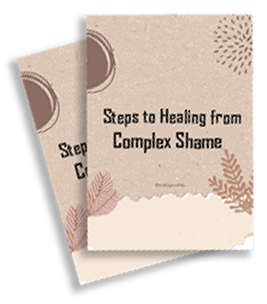
Hi! I’m DR. Zoe
I help women overcome Complex Shame™ and co-dependency so they can experience healthy love
and freedom.
Relational boundaries—the kind you can’t see, but absolutely feel—are foundational to our emotional health. This post explores the murky waters of enmeshment and codependency, and just as importantly, what healthy interdependence looks like. For many of us, these distinctions weren’t modeled when we were growing up.
You may have asked yourself, am I being supportive enough, or am I losing myself again in this relationship? If so, you’re not alone—and this conversation is especially relevant.
What is Enmeshment?
Enmeshment is super sneaky, because on the surface, it can just look like closeness. It often gets praised in families: “we’re just super tight,” “she’s my whole world,” “we don’t keep secrets.” But underneath that closeness is a loss of a sense of self.
In enmeshed relationships, boundaries are blurry or nonexistent. Your emotions become fused with the other person’s. You can’t always tell where you end and where they begin. You may feel over-responsible for someone else’s happiness, guilty for prioritizing yourself, or anxious when someone you love is upset—like it’s your job to fix it.
Let’s be clear: enmeshment is not love. It can feel like love because that’s what you were taught, but it’s fusion masquerading as loyalty.

Example of Enmeshment:
A daughter wants to go away to college, but her mom says, “I don’t know what I’d do without you.” The daughter stays to protect her mother’s emotions. Her autonomy is traded for her mom’s comfort, and everyone pretends it was her idea. That’s enmeshment.
What is Codependence?
Codependence grows out of the same soil as enmeshment but looks different. It’s less about blurred identity and more about compulsive overfunctioning and control.
When you’re codependent, you chronically prioritize others’ needs over your own. Your worth becomes wrapped up in being needed. You ignore your exhaustion to carry someone else’s emotional load.
You might think:
“I’ll be okay if they’re okay.”
“If I don’t fix it, everything will fall apart.”
“They have no one else, I have to help.”
Codependence often begins in childhood—from chaos, addiction, neglect, or emotional instability. You learn that love means taking care of someone else at your own expense.
Example of Codependence:
A woman keeps bailing out her partner financially—not because it helps him grow, but because the idea of him failing feels like her personal failure. Mothers do this with adult children. Siblings do this with each other. It’s learned in families where love equaled sacrifice.
The Key Difference Between Enmeshment and Codependence
Here’s the simplest way to understand the difference:
Enmeshment = identity entanglement. “I don’t know who I am without you.”
Codependence = behavioral overfunctioning. “It’s my job to fix you.”
Both share a common root: a lack of boundaries rooted in fear.
What Does Healthy Interdependence Look Like?
There is a better way. It’s called interdependence—where connection and autonomy coexist.
You love deeply, support fiercely, but stay rooted in yourself. For someone used to enmeshment or codependence, this can feel scary. Autonomy can feel like rejection. But it isn’t.
Traits of Interdependence:
- Emotional responsibility: You are responsible for your emotions—not theirs.
- Mutual support: You help without rescuing or enabling.
- Freedom to say no: You don’t feel guilted or manipulated.
- Separation of pain: You can feel compassion without absorbing their struggle as your own.
- Respect for individuality: Differences are not threats.
In interdependent relationships, love doesn’t disappear when you set a boundary. Saying “no” doesn’t equal betrayal. You are not someone else’s emotional oxygen mask.
Interdependent love breathes. It grows. It doesn’t cling, control, or collapse.

Final Reflections
You are allowed to be whole even if someone you love is broken.
You are allowed to grow, even if it makes someone uncomfortable.
You are allowed to choose you—without it being selfish.
Because we can’t love others well when we’re abandoning ourselves in the process. It’s not disloyal to set a boundary. It’s not cruel to say no. And it’s not wrong to want a relationship where you don’t have to shrink to be loved.
If this stirred something in you—good. That means there’s something worth exploring.
You’re not crazy. You’re just finally waking up.
When we learn better, we do better.
We’re not fixing them. We’re fixing you. And that changes everything.
P.S. If this topic resonates with you, my new book, Stronger in the Difficult Places, is coming out September 30th. It’s a guide to healing your relationship with yourself by untangling complex shame—the root of so many relational patterns like enmeshment and codependence. Click here to pre-order NOW!

Subscribe and Heal your Relationships.
You deserve a healthy, loving relationship and it starts with You. Learn how to untangle
Complex Shame™ and co-dependency to finally have the beautiful, secure relationship with
yourself and others that you’ve always wanted.
Subscribe and as a thank you, I’ll send you the Steps to Healing from Complex
Shame™.






